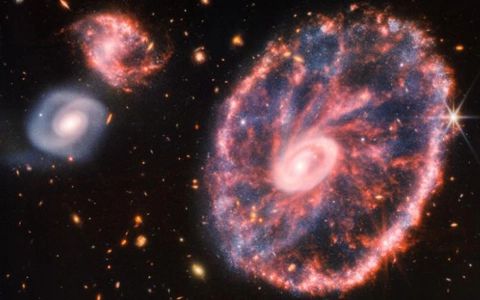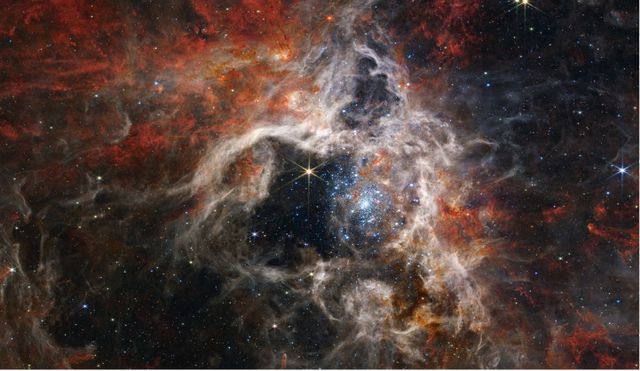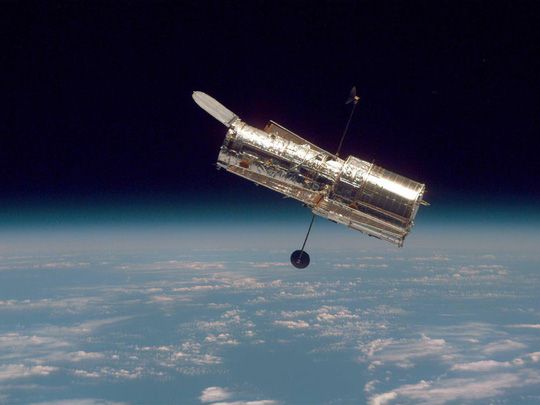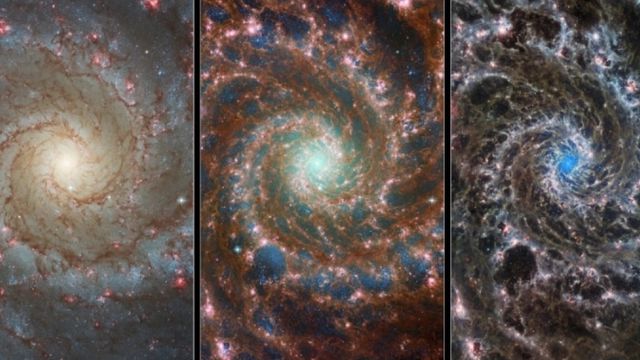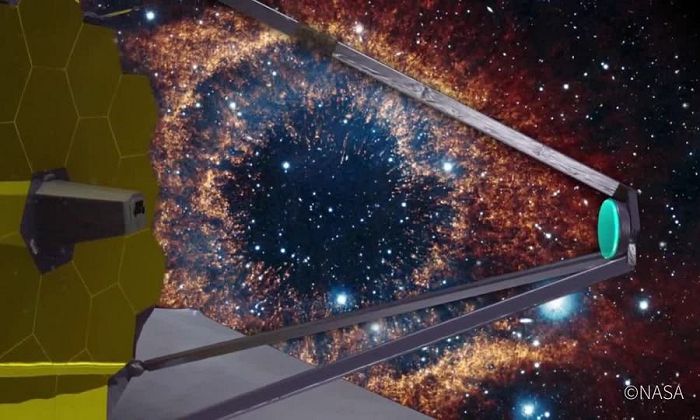“Mesmerized by the Stellar Skeleton: Exploring the Galaxies through the James Webb Space Telescope”
Recently, the James Webb Space Telescope (JWST) captured a stunning image revealing the intricate “skeleton” structure of a distant galaxy.
This image, taken by the JWST, showcases the structure of IC 5332, a spiral galaxy partially obscured by dust clouds, resembling a beautiful “galactic skeleton.” It is an upgrade from the previous Hubble image of IC 5332.
Located in the Sculptor constellation, IC 5332 is part of the vast universe composed of gas, dust, and stars. It lies over 29 million light-years away from Earth.
IC 5332 has been previously photographed, as the Hubble Space Telescope captured an image of this galaxy in the past. With a span of 66,000 light-years, roughly two-thirds the size of our Milky Way, IC 5332 has drawn significant attention.
However, the Hubble telescope is unable to observe the infrared region of the electromagnetic spectrum, whereas the James Webb Space Telescope can. Consequently, the updated image contains previously obscured details, appearing almost entirely different.
“The Hubble image showed dark regions seemingly separating the spiral arms, whereas the Webb image reveals continuous structures repeating the shape of the spiral arms,” stated a representative from the European Space Agency (ESA), who shared this image.
This difference in appearance is attributed to the galaxy’s dust, which has a much higher ability to scatter ultraviolet and visible light than the available infrared frequency for the JWST.
Furthermore, different stars can be observed in both images, as some stars emit brighter at different frequencies compared to others.
To capture this image, the JWST utilized the Medium Infrared Instrument – a dedicated camera that required rapid cooling to minus 266 degrees Celsius to eliminate infrared noise from other heat sources.
The location of the JWST in the vast and frigid expanse of space, far from Earth, is crucial in helping it detect faint infrared light since the heat from our planet would obscure the signals from distant galaxies.
Launched in December 2021, the James Webb Space Telescope orbits the Sun at a distance of approximately 1.6 million kilometers from Earth, in a region of space known as the second Lagrange point.
As an international collaboration between NASA, ESA, and the Canadian Space Agency, the James Webb telescope is expected to operate for approximately 20 years.
Hits: 0

